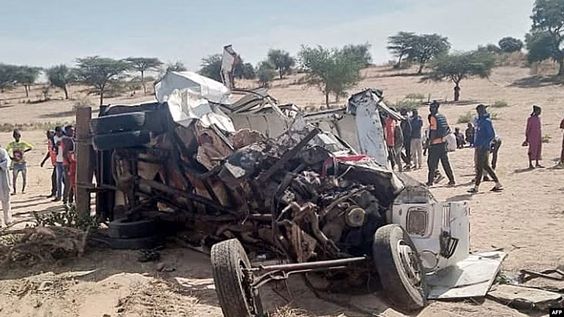Africa
Traffic Fatalities in Senegal Are a Continent-Wide Issue

Eight days after two significant traffic accidents in Senegal claimed the lives of 62 people, the issue of the country’s and Africa’s road safety standards was once again raised. The largest number of traffic fatalities occur on this continent. Experts lay the blame on the dangerous convergence of subpar imports, inadequate infrastructure, and inadequate driver training.
Rush-hour traffic in Dakar is clogged with rusty buses. As youngsters on rollerblades cling to the sides and dodge horse carts and unpainted speed bumps, passengers hang from the back doors. There are no stop signs or traffic lights; motorists have the right-of-way, and pedestrians who cross do so at their own risk.
When crowded buses speed down two-lane, potholed roads outside of Senegal’s largest cities while carrying mountains of merchandise and sheep on their roofs, the already hazardous driving conditions can seem considerably riskier. Farm animals are allowed to wander freely into uncontrolled traffic, and there are no medians or street signals.
In the northern area of the country known as Louga on Monday, a donkey was to blame for causing a public bus to veer and crash into a truck. There were 28 injuries and 22 fatalities.
Eight days earlier, a collision in the southeast Kaffrine region of Senegal resulted in 40 fatalities and about 80 injuries. A passenger bus had a flat tyre, which caused it to collide with an approaching bus.
In response, the government barred the importation of worn tyres and prohibited nighttime bus travel between districts.
world’s highest rate of traffic fatalities.
According to 2018 research by the World Health Organization, Africa has the highest rate of traffic fatalities in the world at 26.6 deaths per 100,000 people, which is nearly quadruple that of Europe.
Africa needs to change its public transportation business models, according to Christopher Kost, director of the Institute for Transportation and Development Policy, a nonprofit organisation dedicated to urban planning.
READ ASLO: Senegalese Journalist in Hunger Strike Is Taken to the Hospital, an Attorney Says
We’re still using a target system in so many African nations, where a driver’s pay is directly correlated with the number of passengers they transport. As a result, they race to get there as quickly as possible, contributing to many of our current road safety issues, he said.
Kost said that changing to a pay system will make drivers drive more carefully instead of filling their buses to the max and speeding to their destinations.
Carolyne Mimano, a partnerships manager at the Institute for Transportation and Development Policy, says that public transportation could be improved by putting a limit on how old buses can be, stepping up bus inspections, and putting a limit on how many hours drivers can work.
Governments in cities have a variety of choices for enhancing safety. Although horse carts, street vendors, bikes, cars, and pedestrians all share African city streets, only automobiles are given consideration in planning, according to Mimano.
WHO says that 40% of all traffic deaths in Africa are caused by pedestrians, compared to 23% of all traffic deaths worldwide.
“We still design transportation using that car-centric methodology,” added Mimano. “We believe that widening the route is the best way to prevent accidents on the road.” And that hardly resolves the issue. In reality, more people are speeding.
It’s possible to get better. Mimano cites Dar es Salaam, Tanzania, which has raised pedestrian crosswalks, spacious sidewalks, and 21 kilometres of designated bus lanes, as well as Kigali, the capital city of Rwanda, which has speed cameras and bus drivers who are paid.
The head of the United Nations Road Safety Fund, Nneka Henry, stated that “Africa and its development partners must prioritise road safety in their national budgets at a level that is commensurate with the burden and develop and implement national road safety programmes in a way that engages all of the government, including the health, transport, education, finance, and trade sectors.”
According to Senegal’s information agency, there are 745 road fatalities on average per year, with nighttime crashes being the most deadly.
